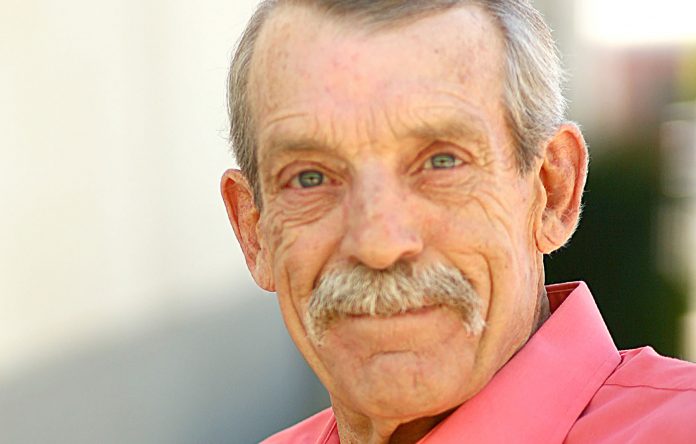A recent article in the latest Rustler and Tribune editions informs of upcoming voting changes in the city of Greenfield (“Districtwide Elections on the Horizon,” March 24) and I thought I would take a few inches of newsprint to offer some opinions on the subject. Now, for those arguing as a non-resident of Greenfield I have no real say in the matter, a valid point, I would counter-argue that I do have some history with the town; as Yogi Berra would say, “You could look it up.”
The change from the present at-large election process would be changed to that of citizens voting for a candidate who resides in their district, or zone. Let us look at some of arguments both pro and con offered by members of Greenfield’s city council: Councilwoman Yanely Martinez states, “District elections bring government closer to home, they will provide a sense of increased awareness between (sic) the districts,” and after citing that she became aware that many community members didn’t know the names of city council members, she offers this, “We are not doing our jobs as elected officials if your community can’t even remember your name.” It could be argued that civic involvement is the onus of the citizen, not the government.
All council meetings, with exception of closed sessions, are open to the public, as is city hall, where all information regarding city matters is readily available to those who are interested enough to ask. And how, exactly, districtwide elections would change that I do not know, but I suspect they would have little impact; citizens are either engaged or they are not.
But Councilwoman Martinez is correct in her assessment of citizen engagement when one looks at the appalling low voter turnout in all the Valley towns in recent elections; it would seem the best approach would be to get small grassroots movements operating to inform citizens of the importance of joining the American system of democracy by casting their vote without fear of government reprisal; a very real concern of many of our SoMoCo residents.
Offering counter argument is Mayor Lance Walker with these words: “District elections do not work in a small town, plain and simple.” For support of his position, he cites the election of a person to the King City council with a mere four write-in ballots; that is incorrect. The actual count was six write-in votes. That person was the previous councilmember of that district and is so again without the hassle of filing and paying any election fees; a smart move to obtain a council seat that could not be accomplished without another write-in candidate also from that district, a distinct improbability.
The decision to enact districtwide elections came about out of an abundance of concern over of lack of representation of minority populaces, in legalese “protected class,” in city elections. What Greenfield City Manager Paul Wood refers to as “unfair stacking of one group against another.”
That legislation was fitting for many municipalities, but in the case of Greenfield, and other South County cities, the question is “Does this apply to this town?” To first answer that question one must know how much dissatisfaction there is with the present city council and how are the minority, the protected class, being underrepresented? I am unaware of any major disruptions in the town’s governance, but if there are problems the question is whether they can be directly traced to the election process.
And while the most recent Census statistics are not yet available, a look at those numbers that are available show that 92.2% of the town’s populace is Hispanic; White, 5.9%, while Black, Asian, and Others comprise a total of approximately 3.2%. Given those numbers it is not hard to imagine every single elected official in town could be Latino or Hispanic.
Now the question is how many of the 64% of the populace that are legal citizens have registered to vote, and then how many actually do vote. In the case of the write-in votes of District 4 in King City, it should be noted that for that election there were 842 registered voters and only six made the effort to vote. How would districtwide elections improve that dismal statistic?
These statistics show the stated reason in Greenfield for districtwide elections is to allow Whites and other minorities equal footing with Hispanic voters. If this has been an issue in Greenfield, it has been a hidden complaint because in a town of 92.2% Hispanic voters, one would think a tattooed rock-n-roller named Lance could not be elected dogcatcher let alone mayor, but he has been and from what I can determine he is a darn good mayor; far better than some in the recent past. So how does that happen except that people will vote not for a surname for the sake of the surname, but will vote their conscience? And conscience is not limited to a district.
The argument has been offered that there should be no argument regarding the change in voting process because the motion to make the change was passed by the city council and mayor. That is true, but such a vote, where obvious dissention arose, in this case was one of, I suspect, financial expediency: why dole out taxpayer money to fight a losing battle? LULAC is the driving force behind the change from open to district elections and with them they carry the weight of the California Voting Rights Act of 2002, so any legal challenge would not be judicious.
Whether districtwide elections will open the door for a more representative government in Greenfield I don’t know, but I do know that if voter turnout in the next elections are at the same low levels as recent elections, then I doubt it will matter much what process is in place.
BITS & PIECES
The City of King is on the move again, this time with a change at the intersection of Broadway and San Antonio Drive, the local “malfunction junction,” the intersection that hosts the only stop light in town. Now, I am somewhat aware of roundabouts, I have driven through a couple of them and the first few times they can be a bit tricky, but only because they are a rarity here in South County; the closest one I know of is in Morro Bay, but I suppose there may be others nearer.
This will be a change for local drivers, and some will chafe at that change, but it will be better all around as that intersection can be confusing for out-of-the-area drivers. I have many times seen drivers waiting to be given a left turn green arrow so they could enter the onramp to Highway 101 north when in fact the traffic lights control the intersect and not the onramp a few yards south. The result of this confusion can cause a line of vehicles stretching sometime as far back as the business entrances on Broadway Circle, which is the busiest section of asphalt in town. And when heading east out of San Lorenzo Park the wait for a light to cross San Antonio to continue east on Broadway can seem interminable, and when it does turn green it allows for one, maybe two, vehicles to cross the intersection.
So, while it may take some getting used to, this new roundabout has got to be an improvement on “malfunction junction.” What will, however, impact all drivers, be they local or travelers, is the coordination between roundabout construction and the ongoing Highway 101 construction that has already been with us for over a year with many months of work still to be accomplished. I’m sure the city will keep us posted on that.














